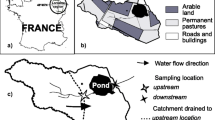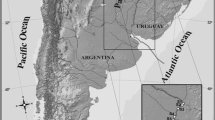Abstract
Permethrin entered use in the 1970s as an insecticide in a wide range of applications, including agriculture, horticultural, and forestry, and has since been restricted. In the 21st century, the presence of permethrin in the aquatic environment has been attributed to its use as a human and veterinary pharmaceutical, in particular as a pedeculicide, in addition to other uses, such as a moth-proofing agent. However, as a consequence of its toxicity to fish, sources of permethrin and its fate and behavior during wastewater treatment are topics of concern. This study has established that high overall removal of permethrin (approximately 90%) was achieved during wastewater treatment and that this was strongly dependent on the extent of biological degradation in secondary treatment, with more limited subsequent removal in tertiary treatment processes. Sources of permethrin in the catchment matched well with measured values in crude sewage and indicated that domestic use accounted for more than half of the load to the treatment works. However, removal may not be consistent enough to achieve the environmental quality standards now being derived in many countries even where tertiary treatment processes are applied.





Similar content being viewed by others
References
American Public Health Association (1998) Standard methods for the examination of water and wastewater. APHA, Washington, DC
Baser S, Erkoç F, Selvic M, Koçak O (2003) Investigation of acute toxicity of permethrin on guppies Poecilia reticulate. Chemosphere 51:469–474
Bedding ND, McIntyre AE, Perry R, Lester JN (1982) Organic contaminants in the aquatic environment. I: Sources and occurrence. Sci Total Environ 25:143–167
Bedding ND, McIntyre AE, Perry R, Lester JN (1983) Organic contaminants in the aquatic environment. II: Behaviour and fate in the hydrological cycle. Sci Total Environ 26:255–312
Berger-Preib E, Preib A, Sielaff K, Rabbe M, Ilgen B, Levsen K (1997) The behaviour of pyrethroids indoors: a model study. Indoor Air 7:248–261
Bonwick GA, Sun C, Abdul-Latif P, Baugh PJ, Smith CJ, Armitage R et al (1995) Determination of permethrim and cyfluthrin in water and sediment by gas chromatography-mass spectrometry operated in the negative chemical ionization mode. J Chromatogr A 707:293–302
Buisson RSK, Kirk PWW, Lester JN (1984) Determination of chlorinated phenols in water wastewater and wastewater sludge. Chromatogr Sci 22:339–342
Chefaro (2010) Chefaro UK Ltd, Huntingdon, UK. Available at: http://www.headliceadvice.net. Accessed July 2010
Cox C (1998) Insecticide factsheet, Permethrin. J Pest Reform 18:14–20
Environment Agency of England and Wales (2007) Proposed EQS for Water Framework Directive Annex VIII substances: permethrin. Science Report: SC040038/SR11. Environment Agency, Bristol, UK
Esteve-Turrillas FA, Aman CS, Pastor A, de la Guardia M (2004) Microwave-assisted extraction of pyrethroid insecticides from soil. Anal Chim Acta 522:73–78
European Commission Directive on Priority Substances 2008/105/EC (2008) of the European Parliament and of the Council of 16 December 2008 on environmental quality standards in the field of water policy
Fawell JK, Sheahan D, James HA, Hurst M, Scott S (2001) Assessment of oestrogens and oestrogenic activity in raw and treated water in Severn Trent Waste. Water Res 35:1240–1244
Gómez MJ, Martínez Bueno MJ, Lacorte S, Fernándes-Alba AR, Agüera A (2007) Pilot survey monitoring pharmaceutical and related compounds in a sewage treatment plant located on the Mediterranean coast. Chemosphere 66:993–1002
Jones OAH, Voulvoulis N, Lester JN (2003) Potential impact of pharmaceuticals on environmental health. Bull World Health Org 81:768–769
Jones OAH, Voulvoulis N, Lester JN (2004) Potential ecological and human health risks associated with the presence of pharmaceutically active compounds in the aquatic environment. Crit Rev Toxicol 34:335–350
Jones OAH, Voulvoulis N, Lester JN (2005) Pharmaceuticals—a threat to drinking water? Trends Biotechnol 23:163–167
Jones OAH, Voulvoulis N, Lester JN (2007) The occurrence and removal of selected pharmaceutical compounds in an English sewage treatment works utilizing activated sludge treatment. Environ Pollut 145:738–744
Kupper T, Plagellat C, Brändli RC, de Alencastro LF, Grandjean D, Taradellas J (2006) Fate and removal of polycylic musks UV filters and biocides during wastewater treatment. Water Res 40:2603–2612
Lai KM, Scrimshaw MD, Lester JN (2002a) The effects of natural and synthetic steroid estrogens in relation to their environmental occurrence. Crit Rev Toxicol 32:113–132
Lai KM, Scrimshaw MD, Lester JN (2002b) Prediction of the bioaccumulation factors and body burden of natural and synthetic estrogens in aquatic organisms in river systems. Sci Total Environ 289:159–168
Lai KM, Scrimshaw MD, Lester JN (2002c) The effects of natural and synthetic steroid estrogens in relation to their environmental occurrence. Crit Revs Toxicol 32:113–132
Lee S, Gan JY, Kim JS, Kabashima JN, Crowley DE (2004) Microbial transformation of pyrethoid insecticides in aqueous and sediment phase. Environ Toxicol Chem 23:1–6
Llewellyn DM, Brazier A, Brown R, Cocker J, Evans ML, Hampton J et al (1996) Occupational exposure to permethrin during its use as a public hygiene insecticide. Ann Occup Hyg 40:499–509
Meakins NC, Bubb JM, Lester JN (1994) The fate and behaviour of organic micropollutants during waste water treatment processes: a review. Int J Environ Pollut 4:27–58
National Health Service (2008) Scabies Patient UK. Available at: http://www.patient.co.uk/pdf/pilsL145.pdf. Accessed 11 June 2010
National Health Service (2009) Effectiveness matters: treating head lice and scabies. 4 (1) June 1999, NHS Centre For Reviews and Dissemination University of York, UK
Oslo and Paris Commission Strategy with regard to hazardous substances OSPAR convention for the protection of the marine environment of the North-East Atlantic OSPAR 98/14/1 Annex 3 1998, pp 22
Plagellat C, Kupper T, De Alencastro LF, Grandjean D, Teradellis J (2004) Biocides in sewage sludge: quantitative determination in some Swiss wastewater treatment plants. Bull Environ Contam Toxicol 73:794–801
Robertson AM, Lester JN (1994) Supercritical fluid extraction of s-triazines and phenylurea herbicides from sediment. Environ Sci Technol 28:346–351
Rogers HR, Campell B, Crathorne Dobbs AJ (1989) The occurrence of chlorobenzenes and permithrins in twelve U.K. sewage sludges. Water Res 23:913–921
SGS (2006) Insect-resist treatments: Permethrin on scoured wool. SGS Wool Testing Services, Info-bulletin:5.11. Available at: http://www.nz.sgs.com/info-bulletin_5_11.pdf. Accessed 1 Aug 2010
Sharom MS, Solomon KR (1981) Adsorption–desorption degradation and distribution of permethrin in aqueous systems. J Agric Food Chem 29:1122–1125
Shaw GT (1994) Mothproofing agents in the UK wool textiles effluents. J Inst Water Environ Manage 8:298–393
Soderlund DM, Clark JM, Sheets LP, Mullin LS, Piccirillo VJ, Sargent D et al (2002) Mechanisms of pyrethoid neurotoxity: implications for cumulative risk assessment. Toxicology 171:3–59
Stangroom SJ, Collins CD, Lester JN (1989) Sources of organic micropollutants to lowland rivers. Environ Technol 19:643–666
Ternes TA, Joss A, Seigrist H (2004) Scrutinizing pharmaceuticals and personal care products in wastewater treatment. Environ Sci Technol 38:392A–399A
Tyler CR, Beresford N, Van der Woning M, Sumpter JP, Thorpe K (2000) Metabolism and environmental degradation of pyrethroid insecticides produce compounds with endocrine activities. Environ Toxicol Chem 19:801–809
United Kingdom Water Industry Research (2004) Priority hazardous substances, trace organics and diffuse pollution (Water Framework Directive): urban catchment study and assessment of diffuse inputs. Report 3. UKWIR, London, UK
United States Environmental Protection Agency (1997) Special report on environmental endocrine disruption: an effects assessment and analysis. Report no. EPA/630/R-96/012. USEPA, Washington, DC
United States Environmental Protection Agency (2009) Eligibility Decision (RED) for permethrin, EPA 738-R-09-306
Westgarth C, Pinchbeck GL, Bradshaw JWS, Dawson S, Gaskell RM, Christley RM (2007) Factors associated with dog ownership and contact with dogs in a UK community. BMC Vet Res 3:1–9
Woodhead D (1983) Permethrin trials in the Meltham sewage catchment area. Water Services 87:198–202
Acknowledgments
The authors are grateful to United Utilities PLC for funding the work and for agreeing to publish the results.
Author information
Authors and Affiliations
Corresponding author
Rights and permissions
About this article
Cite this article
Turner, T., Cartmell, E., Lester, J.N. et al. The Pharmaceutical Use of Permethrin: Sources and Behavior During Municipal Sewage Treatment. Arch Environ Contam Toxicol 61, 193–201 (2011). https://doi.org/10.1007/s00244-010-9615-1
Received:
Accepted:
Published:
Issue Date:
DOI: https://doi.org/10.1007/s00244-010-9615-1




